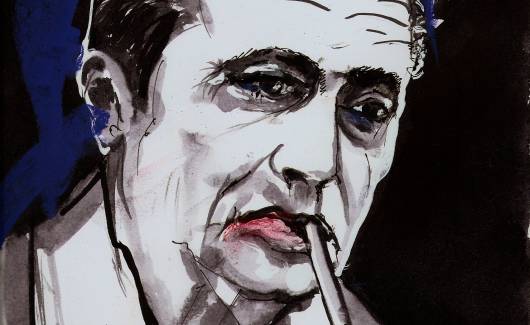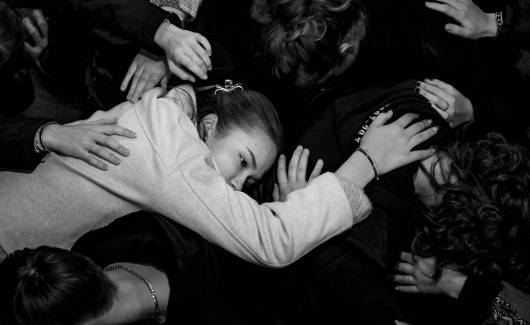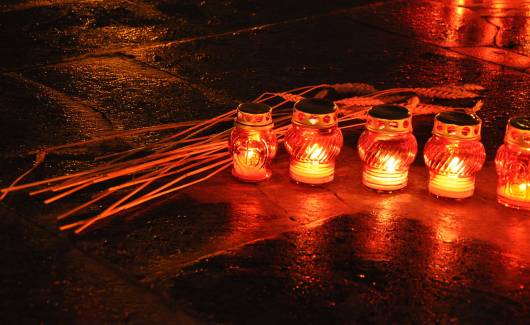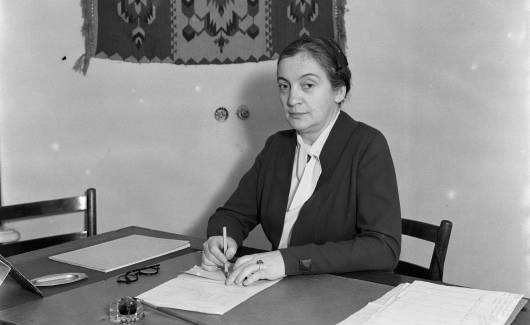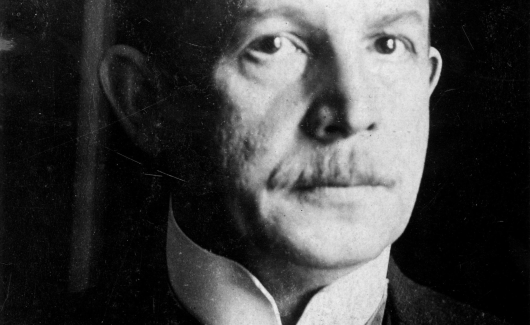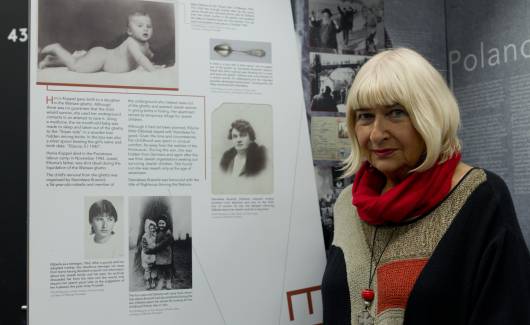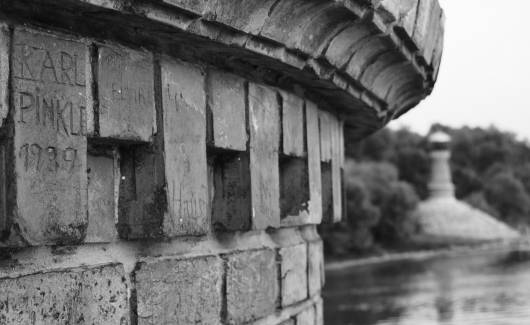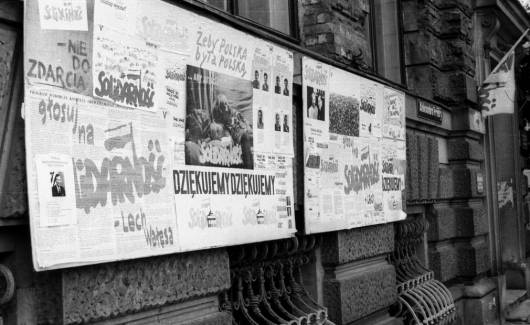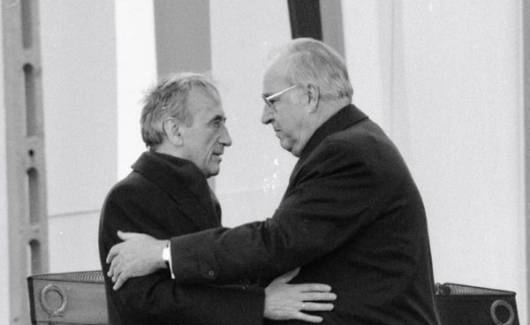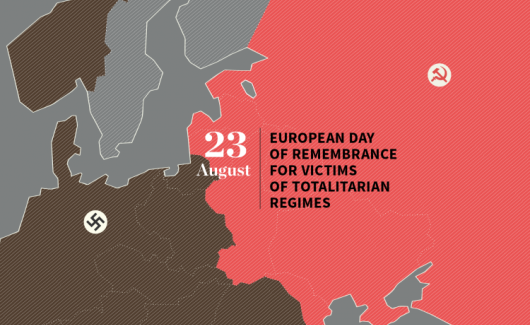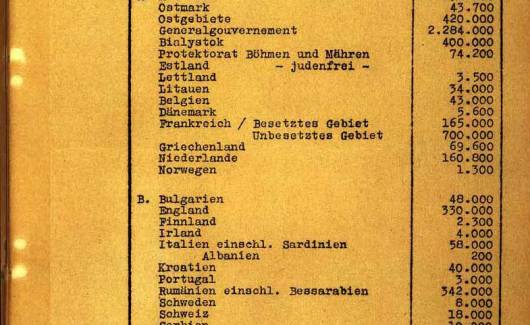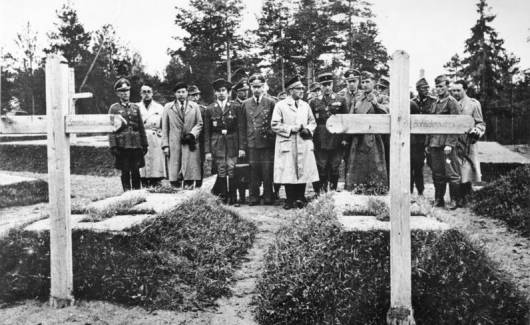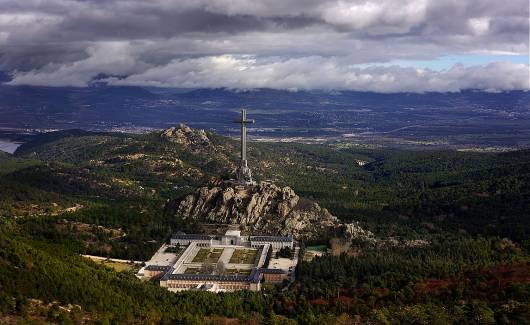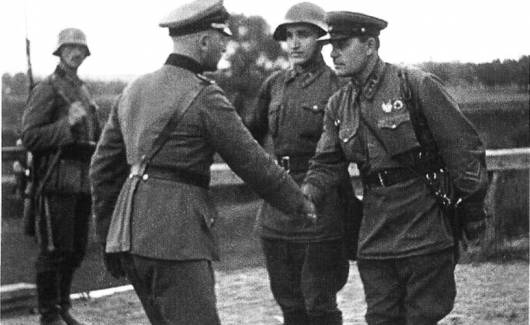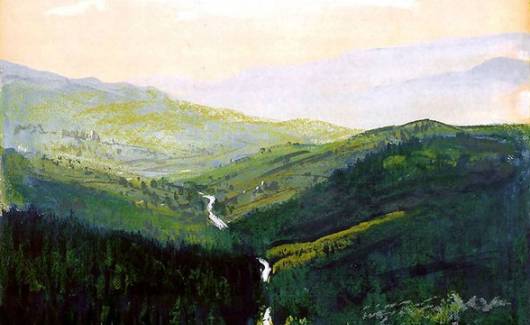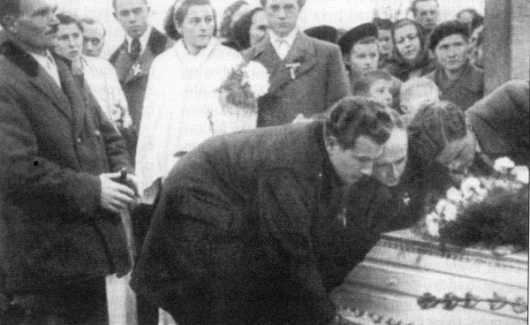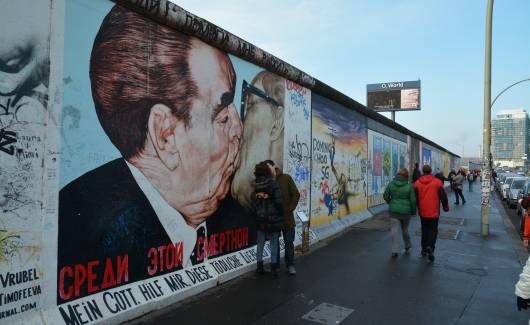ABSTRACT
The paper is a contribution on cultural identity, particularly in terms of local and border identity. The author presents and describes the Slovak town of Skalica situated in West Slovakia close to the Czech border. The text is based on oral history interviews with four citizens of Skalica, conducted in the context of the European Network and Remembrance’s project In Between? in July 2019. The author is interested in the ‘history from below’ capturing local and border identity among Skalica’s inhabitants. The text explores some features of the process of constructing the identity connected to a specific place.
Introduction
In this paper, I am concerned with cultural identity, and more specifically local identity in a small Slovak town named Skalica.
The notion of local history and its connection with constructing local identity is part of contemporary academic discussions as well as public discourse. I would like to present the history of a small Slovak town Skalica and its cultural identity through its strong local identity formed by its vicinity to the Czech border. Introducing the history of this town from two aspects of history research (history from below and history recorded in official documents) could describe unique features of this border area. The ’history from below‘ section was completed by conducting oral history research in the summer of 2018 as part of the In between? project of the ENRS. Oral history is a suitable method for mapping people’s local identities in different geographical, social and political settings.
’History from below‘ recorded with Skalica inhabitants and compared with official documents, historical sources and other texts would provide the basis of the prospect to see how local identity was shaped by history, myths and self-image of inhabitants of Skalica. Watching that town over history makes us see it in the context of a borderland. The border has been always present during its existence; sometimes a real political frontier between two states or kingdoms, and sometimes just as an imaginary line between two nations. It is precisely this change from an imaginary to real political border that is present in the short-time collective memory of the people of Skalica. The town played a key role during the establishment of the so-called first Czechoslovakia in 1918. Several significant individuals had links with this town, for example Dr Pavol Blaho who was representing the idea of Czechoslovakia as well as the architect Dušan S. Jurkovič who designed several buildings in Skalica. And it was also the town where the first Slovak government settled for two weeks in 1918.
These crucial political changes of the early 20th century turned out to be very important for the local identity of the inhabitants of Skalica, especially in the context of later political changes at the end of the 20th century when the Czechoslovak Republic split into two separate states. In my paper, I would like to further analyse how this direction of the historical process has generated and influenced local identity. Building on this direction of analysis, I would like to add some observations on how local identity is presented in everyday life of the people of Skalica.
1. Skalica (Slovak town)
In this chapter, I am going to introduce Skalica, a town in West Slovakia close to the Czech border.
From the geographical point of view, Skalica is located in West Slovakia. On the western side of the town flows the River Moravia, which is part of the border with the Czech Republic (the region of Moravia). In the area of Skalica, the lowland of Záhorie unites the foothills of the Small Carpathians.
According to the last update of the statistical data on the website of Statistical Office of the Slovak Republic, Skalica has 15,485 inhabitants in 2019. (egov.skalica.sk, 2019)
1.1 Short history of Skalica (a small Slovak town)
Speaking of identity inevitably links the direction of thinking to history, history of a country, history of a region. In the context of links with territory, some historians, anthropologists, ethnologists or other experts in the humanities believe that it is not national identity that we mainly care about. More important seems the identity related to one’s region, town or village where individuals live and feel connected. How do we feel about the closest area which shapes our relationship with different spheres of our life? One of the important aspects is the history of one’s region, town or village.
In this chapter, I would like to briefly introduce some key points in the history of Skalica.
According to archaeological discoveries Skalica, as part of the region Záhorie, was populated 3,500 years ago. The area’s development was conditioned by the flow of the River Moravia. The territory on the left bank of the river became known as the Amber Road. The Amber Road was an ancient route used for transferring amber from the costs of the North and Baltic Seas. This could be seen as a sign of importance of this area since prehistoric times. As regards its Slavic population, it presumably settled in this territory between the sixth and eighth century.
In the history of each town or village, of great importance is the date of the first written source concerning the settlement. The first reliable written reference to Skalica dates back to 1217. The source was a document signed by the Hungarian King Andrew II.
Moving on in the history of the area brings us to the importance of the fact that Skalica become a free royal town. The founding documents of the privileges are from 1372 and were signed in the town of Trnava. Throughout the centuries, the town of Skalica got different privileges such as the right to hold a market twice a week, the right to exercise judicial authority and the exemption for the inhabitants of Skalica from paying toll for goods throughout the kingdom. The inhabitants of Skalica were always proud and protective regarding their town privileges. They were prepared to protect their rights from being taken by squires, royal offices or the archbishop.
Skalica had also its important times during the nineteenth and then the early twentieth century. The years 1848 and 1849 are well known for the revolutionary developments in several nations of the Habsburg monarchy. One of the nations concerned were the Slovaks. The majority of Skalica inhabitants had Slovak nationality yet until 1848 they spoke mostly Hungarian. The Hungarian government discouraged people to use the Slovak language directly – with several statutory regulations – or indirectly by different bans; for example, it was difficult to publish Slovak newspapers or books. For the inhabitants of Skalica it was important to get the opportunity to speak publicly and officially in the Slovak language and this became reality in 1848 and 1849.
Coming closer to its contemporary history, Skalica lived through maybe the most important times ever. In the late 19th century and the early 20th century Skalica became known thanks to a number of its outstanding citizens. In this context, one can mention Dr Pavol Blaho and Dr Ľudovít Okánik. Both of them improved the cultural and social life of Slovaks living in Skalica. With the help of other active intellectuals from Skalica and the region Záhorie, a Catholic association called Catholic Circle (Katolícky kruh) was established. It organised amateur theatre performances and lectures as well as participated in founding other practice-oriented associations such as a food association or a credit union. Dr Blaho was also active in politics and he was elected an MP to the Hungarian Parliament in 1905.
The most important part of the history comes in 1918, again linked to Dr.Pavol Blaho and Dr Ľudovít Okánik. Both of them jointly with the town of Skalica played a crucial role in establishing the new Czechoslovak Republic1. It was declared on 28 October 1918. The so-called Temporary Government representing Slovakia2 came to Skalica on 6 November 1918. The head of the Government was Vavro Šrobár, a close friend of Pavol Blaho. They used to know each other since the time of national activism in the Austro-Hungarian Empire.3 The Temporary Government had its seat in the flat of Pavol Blaho for ten days after which the Government resigned. During those days Pavol Blaho was Minister of the Interior.
In the context of the historical, local and border identity, it is important to mention the dissolution of Czechoslovakia in 1993. After the political change in 19894, Czechoslovakia became a democratic republic of two nations of the Czechs and the Slovaks. In 1990 and 1992, Slovak nationalism was an increasing problem used by the leading politicians on both sides. Politicians on both sides were unable to find a mutually acceptable agreement of the coexistence of the Czech and the Slovaks in a common state. Two of them, Prime Minister Václav Klaus (on the Czech side) and PM Vladimír Mečiar (on the Slovak side) prepared, after a short period of negotiations, the separation of these two nations as individual states.
1.2 Skalica nowadays
The last year of 2018 was very important not only for Slovakia and the Czech Republic but for Skalica as well. For the town of Skalica, it was the year of remembering and celebrating the short period of Skalica as Slovakia’s capital when the First Czechoslovak Republic was being established in November 1918. Several celebrations took place on a local stage. There was also a plan for a special event, a summit of the Slovak and the Czech governments.
One important aspect of everyday life is the unique dialect of the people of Skalica. The name of the dialect is ’Skalica town language‘ and the people born and living in Skalica use it regularly. Even the local newspaper invites contributors who can write articles in this dialect.5
2. Identity: local and border identity
The way we perceive ourselves, identity can only be understood in relation to culture, the culture in which we were born, or in which we live our lives. Identity is one of the key notions to which not only social researchers refer but which is also discussed on social media and in everyday life from different points of view.
Definitions of the notion of identity vary from the perspectives of researchers and thinkers. One of the perspectives of describing identity in the social context is to cover it by the key notion of cultural identity. “One thing that inter/cultural communication scholars do agree on is that the term cultural identity has been employed as an umbrella construct to encompass, or subsume, related group identities such as nationality, race, ethnicity, age, sex and gender, sexuality, socioeconomic status, regional identity, ethnolinguistic identity, political affiliation, and (dis)ability. Also, cultural identities are inherently relational, and shape and are shaped by communication choices, behaviours, and negotiations, particularly within intercultural interactions.” (Chen, Yea-Wen, Lin, Hengjun 2016)
In this paper, I am particularly interested in local and borderland identity which in this case (the town of Skalica) are intertwined.
“One way in which identity is connected to a particular place is by a feeling that you belong to that place. It´s a place in which you feel comfortable or at home, because part of how you define yourself is symbolized by certain qualities of that place. The geographer Relph, for example, has even gone so far as to claim that ʻto be human is to live in a world that is filled with significant places: to be human is to have to know your place ʼ.” (Identity: Gender, Race, Etnicity and Sexuality 2015, 127)6
Different places are not neutral for people, especially for local people or people who are not strangers in different areas. It could be seen in different stages form international to local.7 Places could be and often are filled with some content and significance (for certain people). A place, a landscape, a territory is not neutral, there are often some symbols, monuments and memorials connected to the memory of the people, the memory of the place, and we can call them ’places of memory ‘8. A connection between identity and places could be seen as also including border issues. “(…) ʻborder phenomenonʼ is significant not only in the context of state borders but also in the case of many socially and culturally meaningful spaces, from the human body to local and regional administrative units, from the turfs of gangs to no-go areas and red-line zones.” (Paasi 2016, 483) The concepts of borders and topics of border studies present different attitudes. In the context of my paper, it is also useful to mention relational thinking and the cultural border.
The subject of border or boundaries is a key concept of different social disciplines. “It has been associated with research on cognition, social and collective identity, commensuration, census categories, cultural capital, cultural membership, racial and ethnic group positioning, hegemonic masculinity, professional jurisdictions, scientific controversies, group rights, immigration, and contentious politics, to mention only some of the most visible examples.” (Lamont, Michele, Molnár, Virág 2002, 167) As mentioned in the Willey Blackwell Companion to Cultural Geography, borderland studies (established and enhanced in the 1990s and the early 21st century) are recently linked to identity. (Paasi 2016, 483)
Relational thinking accentuates the situation in which a border is established. This way of interpretation works with boundaries as a social construct where ’all borderings of space are based on human choice and motivations and, thus, emphasise power relations.’ (Paasi 2016, 482)9
In the research part, I present parts of interviews where we can see the way some of Skalica’s inhabitants construct their identity intertwined with the place where they live.
3. Research: The ENRS’s In Between? project
During the summer of 2018, the In Between?10 project was delivered in the town of Skalica. The initiative is one of the projects carried out by the European Network and Remembrance (ENRS)11. For one week (13 July until 19 July 2019), six students and three project coordinators conducted interviews with nine interviewees. Seven of the research participants were born or live in the town of Skalica. The intention was that the interviews be conducted by the students and the topics of the interviews focused mostly on the life and contemporary history of Skalica, the region linked to the history of the Slovak/Czechoslovak Republic.
The interviews were based on the oral history method, which provided a suitable background for obtaining life stories and ‘history from below‘ information and views. A single interview was conducted with each person from the selected group. The age of the interviewees varied, there were individuals of the working age, some were retired. As regards gender, three of them were women, the others (6) men.12
3.1 Topic of interviews
The project In Between? is mostly about people who live on any kind of border. The meaning and reality could range from political and historical frontiers through regional, to borders between administrative units.
The interviews and the list of the questions were prepared by a group of cooperating students. As a preparatory part of the project, all of them heard a lecture about Czechoslovak (Czech and Slovak) history. The questions asked were rooted in Czech and Slovak history, especially the key affairs of the last hundred years, i.e. the establishing of the common republic, the coup d‘état of 1948, the Prague spring’ (1967-1968), the period of ’Normalisation’ in the 1970s and the 1980s, followed by the fall of socialism in 1989 and finally the dissolution of Czechoslovakia in 1993. All respondents were asked about these historic events/breakthroughs in Slovak history and all of them answered these questions.
All the interviews were held in a friendly atmosphere13 and the average duration of each interview was about 40-50 minutes. The dynamics of the interviews varied.
3.1.1 Chosen interviewees
For closer analysis of local identity related to Skalica, I have chosen the following narrators:
• J.H. 70 years old, female
• A.D. 78 years old, male
• M.S. 77 years old, male
• P.M. 54 years old, male
I have decided to work with these four interviews because of some common characteristics. Among them, three belonged to the same generation. They were born during or after the Second World War. As the interviews were structured along the linear flow of important historical moments of Czecho/Slovakia, and they lived through most of them, I was interested if their view of life would be similar. The last interviewee is approximately one generation younger than the others. It was interesting to see his experiences and point of view.14
In this paper, I concentrate on two topics revealed in the interviews and related to the main topic – identity. There are two sub-chapters. The first one refers to the affiliation of the narrators to their hometown, the other one is about the reflection on living on the border and a connection with the Czech nation.
3.2 Identity of the inhabitants of Skalica in the interviews
During the interviews and afterwards when analysing what had been said, I took note of a single main topic mentioned by all the participants. It was a strong affiliation with the hometown (Skalica). All the interviewees mentioned or spoke about patriotism, feelings for the place they were born, in different ways but always positive.
The narrator J.H. (70 years old): “I have been living in Skalica since I was born. My ancestors also used to live here. So, I feel being a local patriot.”15 Later, she continued: “very good. Skalica is the best place to live. That’s it.”16 It sounds quite opposite to the later description of the difficult life of her family ancestors who were affected by the change of the democratic system of post-war Czechoslovakia into an oppressive regime in socialist Czechoslovakia. This female narrator is interested in history. She explained to us the mentality of Skalica residents through a myth which is still popular among the people. The key point of this legend is often used to explain the uniqueness of Skalica inhabitants. To put it short: the town of Skalica used to have capital law which was used for executing the people of Skalica and its surroundings. Once a thief was brought there to be decapitated by the executioner of Skalica. But the mayor gave him some money and told him that he should go to be executed somewhere else. ’We have gallows just for us and our kids.’17 From this statement derives a shortened variation: ’For us and for our kids.’18 This slogan could be seen as an important building block for local identity.
Another narrator spoke about his feelings for Skalica in terms of never leaving this town, although he had several opportunities to do so. A.D. (78 years old). He was asked if he could imagine living somewhere else and his answer was: “I had several opportunities, but no way. And where? I told you I was born in Bratislava, but it’s my mum’s’ fault, not mine.”19 (said jokingly – P.Ch.) Later he spoke about his trip to Great Britain during communist rule in Czechoslovakia.20 He explains how he refused to stay abroad, not only because he had a three-year-old daughter but also because he could not imagine leaving his home forever. Later, he returned to the topic of Skalica as the best place for living for him. “Here in Skalica, I feel good. Sometimes it is worse and other times… but it depends on the fact how you arrange it. I would like to …. Moreover, I already have a cemetery plot.’21 Afterwards, he sums up: ’So I have my place (cemetery plot - added by P.Ch.). So, I have to die here.”22
The final narrator P.M. (54 years old) spoke about his family roots connected to Skalica and the region: “Yes, the parents of my mum and also my father’s parents came from Skalica. The ancestors on the mother’s side, when we did some genealogical research, they could be traced back to the 18th century. But on the father’s side we have the roots in South Moravia too.”23 This interviewee did not speak about his relationship to the town of Skalica but according to his narration about being interested in the roots of his family he seemed satisfied with his findings. As he continues talking about his childhood in Skalica, the description is very idealistic. P.M. (54 years old):
“So, I have beautiful (memories of childhood in Skalica – P.Ch.). That’s probably typical for each family. So, we had a big family. During summer holidays, we always met with our big family, with cousins, so we played theatre together, because we were from such a family interested in theatre and amateur theatre-playing. So, since childhood we had worked in the vineyard, Grandfather was a farmer. Basically, every day we had to hoe or collect fruits and so on. Afterwards we had fun, we played theatre for all the people in the street, for the whole district, the one in the town, a small town, …”24
For all the narrators Skalica is very important as a place where they were born and/or they have lived their lives. In all interviews, we can find a strong relationship with the town and also a sense of being proud to have his/her roots here in the town. In anthropology and other social sciences, one of the main features for constructing identity is the distinction between ’we and the others‘. Thus, we can see the process of building their self-integration at the level of local identity, which for them is based on the history and distinctiveness of their town. All of them knew the history of the town and were aware that Skalica had played important role in establishing the First Czechoslovak Republic in 1918. All of them mention their slogan ’Just for us and for our kids.’25 They all were proud of their unique dialect. Some of them even supposed that it is not that easy to become a member of the Skalica community.
3.3 ’Border‘ and Czechoslovakian identity in the interviews
What makes Skalica people feel special is not only their sense of being something special from the historical point of view but also the vicinity of the border with the Czech Republic. The latter frames the memory about the dissolution of Czechoslovakia. All of the narrators were asked to reflect on the situation or their reaction when Czechoslovakia split in two. J.H. (70 years old) answers the question about the situation after the Czechoslovakia’s dissolution: “It was really harmful to us. Not just for my family, but here. Here in Skalica it was taken very hard. Here in Skalica, Mečiar26 was not really supported. …. You know Sudoměřice (a small village on the Czech side – P.Ch.) is three kilometres far away. We used to go for a trip there, to have lemonade, we would walk there and take a beer, we rode our bikes. …. And now you cross the border and the customs officer asks you ʻWhat are you carrying?ʼ So what I am carrying, nothing …..And what kind of people were there on the border, it was disgusting. They sent here such ʻGerman shepherdsʼ which had been on the western border before. There were such boys, not really clever. I don’t want to hurt them, they had their orders, but it was desperate, desperate. And I can tell you, I used to travel for shopping to Hodonín (a small town close to Czech side of the border – P.Ch.) every week. Since the Federative Republic dissolved I have never been there.…. You know, we felt at home in Czechoslovakia, so it was bad for us.”27
M.S. (77 years old) puts it very simply: ... “And the same as regards Czech or Czechoslovak relations. I feel proud that I can live on the border.”28
A.D., a 78 years-old narrator answers the question about the split: “I will tell you something. Someone who lives in Banská Bystrica (a town in Central Slovakia - P.Ch.) had a completely different experience than we have had. Because we had friends and girlfriends there. We went fishing there; we went there to take a bath. So, it was difficult for us, but we got used to it. And we have come back now.” (he means – back together because of both countries the Czech Republic and the Slovak Republic are part of the European Union now. – P.Ch.)29
Just as the other narrators, M.S. (77-year-old) also speaks about living on the border close to the Czech Republic. He started:
“Oh, I have been thinking that you came exactly to ask this question, or for my collaboration. (The question was about the dissolution of Czechoslovakia -P.Ch.) I don’t know how it was 100 years ago but I can imagine that the life of ordinary people flows without the interest of what’s going on ʻup thereʼ (in the meaning – official politics – P.Ch.) And people help one another, they get to know one another and it was the same hundred or two hundred years ago. The River Moravia flows here, on one side Slovak people live, on the other side Moravians, what a big difference could there be? Not a big one. The people got to know one other, they got married. My brother’s wife was from the nearby village of Sudoměřice. There were lot of such mixed marriages.”30 The narrator finishes his reflection: “So with this (the contact between the two sides– P.Ch.) we took the dissolution very badly.”31
Then he continues seeing the problem in a broader perspective:
“I thought, if the state had fifteen million citizens, which means five million Slovaks and ten million Czechs; we would be stronger against Germany or Hungary. Even the state would be a more serious and powerful partner. And this hasn’t happened. But you know how it works in politics, it is all about fighting for power. I didn’t believe, I was an idealist, naive in the beginning (M.S. speaks about his carrier in local politics – P.Ch.). I thought that being fair is the right way, but in the politics it doesn’t work like this. For example, what happened in 1992 (the arrangement of the dissolution of the Czechoslovak Republic – P.Ch.), there was no referendum, without any serious decision our common Republic was divided in two. And we had a gathering on the square here in Skalica and I had no idea what I should tell the people. Slovaks were proud that we have our Slovak state but I had the feeling inside that everything could finish in a different way.”32
The narrator P.M. (54-year-old) had a similar reaction to the question about the Czechoslovakia’s dissolution in 1993. P.M.:
“I don’t know about the others, but we weren’t prepared. On the one hand, the border is about two kilometres away from Skalica and it was normal here that a wife was from the Moravian side or the opposite side of her husband (was from the Moravian side – P.Ch.) and they moved here to Skalica. Or citizens from Skalica moved to the Moravian side. So, we were affected by the change, it is natural this way. And it changed all of a sudden and without a referendum as we know it from history, but we were not happy about it. But I think we are not affected by the change, I mean that the relations are still alive. It is good that the border is not there, I mean that it’s not functioning any more. There used to be a custom service, but then life returned to normal. But we were not very happy about it; I suppose the vast majority of Skalica inhabitants.”33
We can see from the answers concerning the Czechoslovakian dissolution that it was neither expected nor welcome in Skalica. We can understand it in the context of common Czechoslovak history, which is appreciated and taken as part of important national and local history.
Conclusion
The subject of identity is a relevant and significant topic for different social sciences nowadays. Furthermore, the definition of this notion varies depending on the perspective taken. In this text, I have used local and border identity as integral parts of the umbrella notion of cultural identity.
I was trying to find some of the features which together build specific local and boundary identity in the location chosen. The place at which I took a closer look is the Slovak town of Skalica situated close to the Czech border. For analysis, I used oral history interviews conducted during the ENRS’s In Between? project. One of the aims of the project is acquainting young people, university students from different European countries, with a specific area in Europe, for which any kind of border is significant. The border in Skalica has always been there. The border was there in the Middle Ages (between the Czech and the Hungarian kingdoms, later between two parts of the Austrian/Austro-Hungarian Monarchy). Lately, that border became very important during the establishment of Czechoslovakia and then later again at the time of its dissolution. While conducting interviews with inhabitants of Skalica, we found that the border was an important part of constructing the local identity of the chosen narrators. According to the interviewees, the boundary is an important part of history particularly contemporary. Being part of Czechoslovakia was important for the narrators. All of them felt disappointed by its dissolution.
All the narrators also mentioned how important being part of Skalica was for them. Skalica meant something special for them. Maybe to put it more precisely, they felt unique to be inhabitants of Skalica.
There are several directions in which further analysis could go. There are interesting questions about collective memory in constructing local identity in Skalica and also other topics not mentioned in this paper which are part of the Skalica identity in the interviews.
Being part of the In Between? project brought me an interesting opportunity to familiarise myself with the subject of local and border identity through the specific example of the town Skalica. Getting to know and analyse local and borderland identity could be helpful for understanding deeper geographical, social and cultural movements in different parts of the world. It could help discover different narratives about ’national‘ topics and see variability on personal, local, social and cultural levels.
PETRA CHOVANCOVÁ, PhD works as an assistant for education and research at the Department of Cultural Studies at the Faculty of Arts at Comenius University in Bratislava. She has completed her PhD programme at the Department of Cultural Theory at the Faculty of Arts at Charles University in Prague. Her focus in the humanities and research field are oral history, social and cultural anthropology, history of the Slovak cultural identity, cultural geography and gender studies.
petra.chovancova@uniba.sk
NOTES
1. Czechoslovakia was one of the newly established states after the end of the Great War in 1918. It was one of the successors of the Austro-Hungarian Empire.
2. The so-called temporary government in Skalica was a tool of the central government in Prague and completely subordinate to it. The jurisdiction was limited for the region of Záhorie.
3. They were editors and publishers of the magazine called Hlas (The Voice), which was a platform for the presentation of the Czechoslovak cultural and national connection.
4. The so-called Velvet Revolution or Gentle Revolution“of 1989 was a non-violent transition of power in the state.
5. The chapter about history of Skalica is based on two publications:
Bokesová, Buchta, Irša, Janšák, Kraskovská, Šátek, Pichlerová, Spiesz, Fundárek, Gajdoš, Jurkovič,Viestová, Fleišíková (1992) Skalica. Skalica: Mestský úrad Skalica, ISBN 80-900978-1-2.
Ján Buchta, Ján Sloboda, Zora Viestová (1968) Skalica, V minulosti a dnes. [Skalica in the past and present times]. Bratislava: Obzor, 1968. 65-069-68.
6. It is a quotation from Gillian Rose used in this book.
7. To understand it in specific contexts, it is useful to provide some examples. As an interesting and meaningful place in the international context, we could use the coast of Normandy, which could be linked to the fights during the Second World War.
8. Referring to the common notion of Lieux de Memoire popularised by the French historian Pierre Norra.
9. Based on: Wood, D.(1992) The Power of Maps. London: Routledge.
10. “In Between? is an educational project which began in April 2016. The participants are given an opportunity to conduct oral history research in European borderlands. Gaining theoretical knowledge and interdisciplinary and practical skills, they collect audio and video recordings of individual historical narrations and scans of private photographs in order to share them with museums and historical archives.” (https://www.enrs.eu/inbetween 2019)
11. “At the European Network Remembrance and Solidarity, we foster dialogue on 20th-century European history. We do this by organising a wide range of projects, from exhibitions and publications to workshops, study visits and conferences. Our aim is, guided by the spirit of mutual trust, to support the development of a common European culture of remembrance.” (https://www.enrs.eu/en/about-us 2019)
12. The interviewees were recommended by local personalities and approved by the local coordinator. Rather than conduct representative research, the aim of the In Between? project is to teach the participants of the research project how to make oral history interviews and gain knowledge of the local history of the chosen borderland area. In the following editions of the project, it might be interesting to make interviews with more heterogenous group of Skalica inhabitants.
13. There was one exception. The interview went on in a good atmosphere, but the narrator refused to sign the consent of using the recording for further academic, archival and other purposes.
14. There are three/four other interviewees whom I am not analysing in this paper. They have specific features, different from those presented here. Two of them were not settled in Skalica, nor were they born there. One of the participants has moved to Skalica lately and it would be interesting to make a reflection of his viewpoint on the Skalica identity. The last interview participant stressed a minority topic, which is also an interesting aspect not mentioned in the other interviews.
15. J.H.: „Žijem v Skalici od narodenia. Aj moji predkovia tu žili. Takže sa cítim byť lokál patriotom.‘
16. J.H. „Veľmi dobre. Skalica je ideálne miesto pre život. To jako.“
17. ”My máme šibenicu enem pro nás a pro naše deti.“
18.”Enem pro nás a pro naše deti“.
19. A,D.:"Já jsme měl možnosti, ale né ani bohoví. Né a kde? Šak to. Já sice povídam, narodil jsem se v Bratislave, ale za to může mama, né já.“
20. It took place in 1966 according to his narrative and it was a visit of a folk ensemble, which he was part of.
21. A.D: Tady ve Skalici je mi dobře. Někedy horší, někedy ale, to jak si to člověk zarídí. A tu bych aj… Já už mám dokonca aj místo kúpené.“
22. A.D.: “No a takže už místo mám. Takže já už tady musím umřít.“
23. P.M.: “Áno, aj maminy rodičia, aj otcovi rodičia boli zo skalice a po matkinej strane je to hlboko do 18.storočia, čo sme si robili ge.. tieto no genealogické výskumy, ale po otcovej strane mám aj z Moravy z južnej také korene takže.“
24. P.M.: ”Tak ja mám nádherné (spomienky na detstvo v Skalici – P.Ch.). To asi má každý v akej rodine býval. Tak my, my sme mali veľkú rodinu. Vždy sme sa cez prázdniny schádzali s veľkou rodinou bratrancami, takže hrávali sme divadlá, keďže sme boli z takej, rodiny takej divadelníckej, ochotníckej. Takže od malička, buď sme pracovali vo vinohrade, lebo starý otec bol maloroľník. A vlastne každý deň tam bolo treba niečo buď zbierať alebo okopávať alebo podobne alebo potom sme sa bavili tak, že sme sa hrali divadlá pre celú ulicu, pre celý náš región ten v meste, v malom meste,...“
25. “Enem pro nás a pro naše deti.”
26. One of the politicians who prepared the dissolution of Czechoslovakia on the Slovak side.
27. J.H.: “Viete čo, to bolo veľmi bolestivé pre nás. Nemyslím, len moju rodinu, ale tuto. Skalica to prežívala veľmi, veľmi ťažko. V Skalici nemal Mečiar nejakú podporu. V Skalici...
Viete, že Sudoměřice máte 3 kilometre. Tam sme chodili na malinovky, tam sme chodili, neviem na pivo, na bicykloch. A teraz pôjdete cez hranice a colník sa Vás pýta: „A čo veziete?“ No, čo veziem, nič neveziem. .... Aj čo tam nasadili na tie hranice vtedy, to bola taká, to bolo hnusné. Oni nasadili na tie hranice takých tých vlčiakov, čo boli na západnej hranici. Takých tých chlapcov, také vygumované mozgy. Nechcem im blížiť, alebo či to mali rozkázané, ale to bolo, to bolo žalostné, to bolo žalostné. A ja vám poviem, že jak som každý týždeň chodila do Hodonína, to je tu kúsok na nákup. Od rozdelenia federácie som tam nebola. ...Viete že proste, my sme sa cítili byť doma v tom Československu, to bolo, bolo to pre nás zle.“
28. M.S.: “A to isté aj tieto medzi české alebo československé vzťahy. Ja to považujem za česť, že môžem žiť na týchto hraniciach.“
29. A.D.: “Nó, já Vám neco povím, ten kdo žije v Banské Bystrici, to prežíval, úplne ináč ja my. Protože my sme tam měli kamarádov, frajírky. Chodili sme tam na ryby, chodili sme sa tam kúpať. Takže my sme to niesli dosť ťažko, ale zvykli sme si. A vrátili sme sa zpátky.“ (myslí tý, že oba štáty sú v súčasnosti v EÚ – P.Ch.)
30. M.S.: “No, pre túto otázku, ktorú ste povedali som vlastne čakal, že ste prišli, iba pre ňu alebo pre spoluprácu. No tým, že sme na hraniciach, tak já neviem, čo bolo pred 100 rokmi, ale viem si to domyslieť, že ten život obyčajných ľudí plynie bez toho, čo sa deje hore. A ľudia si navzájom pomáhajú, spoznávajú sa, to bolo iste aj pred tými stomi aj dvesto rokmi, keď tu tečie rieka Morava na jednom brehu žijú Slováci a na druhom Moraváci, jaký veľký rozdiel môže byť, nebol veľký. Ľudia sa navzájom spoznávali, vydávali, ženili. Môj brat mal manželku to sa z tej vedľajšej dediny Sudoměřice. Takých manželstiev zmiešaných bolo veľa.“
31. M.S.: “Tak potom sa Vám to rozdelenie nesie veľmi ťažko.“
32. M.S.:“A ja som si myslel, aj keby ten štát keby bol 15 miliónový, teda 5 Slovákov a 10 Čechov, by sme boli silnejší voči aj Nemecku aj Maďarsku aj taký ten serióznejší alebo silnejší partner a to sa nestalo. No ale viete jak to je v tej politike, vždy to je boj o moc. Ja som tomu neveril, ja som bol idealista zo začiatku a naivný, že s poctivosťou najďalej zájdeš a v politike to celkom neplatí a to sa udialo aj v tom 92, kde bez referenda, bez nejakého veľkého rozhodnutia alebo teda závažného rozhodnutia treba parlamentov sa rozdelila republika. No tak nás to bolelo a bolo stretnutie na námestí a verte mi, že nevedel som, že čo tým ľuďom mám ani povedať, že Slováci sme sa bili do pŕs, že my máme samostatný Slovenský štát a ja som vo vnútri cítil jak, že to mohlo byť aj inak“
33. P.M.: “No, neviem akože ostatní, ale my sme moc na to neboli dobre pripravení, lebo jednak tá hranica je odtiaľto dva kilometre tuším, zo Skalice a bolo tu bežné, že manželstvá boli z Moravy manželka alebo naopak manžel bol a prišli sem bývať alebo Skaličania išli bývať na Moravu a tak. Takže nás sa to trochu dotklo takže nie je to až také prirodzené. A prišlo k tomu vlastne dosť náhle a bez nejakého referenda, však to vieme z dejín a neboli sme tým nejak nadšení. Ale myslím, že nás to nejak až tak nepoznačilo, teda tie vzťahy furt tu držíme. Je dobre že teda, že tam nie je tá hranica ne..nefunguje. Chvíľu to bolo také, že tam boli colníci a kontrolovali a potom to sa to zmenilo k normálnemu životu. Ale neboli sme tým nejaký nadšený teda. As, asi väčšina Skaličanov.
LIST OF REFERENCES
Bokesová, Buchta, Irša, Janšák, Kraskovská, Šátek, Pichlerová, Spiesz, Fundárek, Gajdoš,Jurkovič,Viestová, Fleišíková (1992) Skalica. Skalica: Mestký úrad Skalica, ISBN 80-900978-1-2.
egov.skalica.sk (2019) https://egov.skalica.sk/Default.aspx?NavigationState=880:0:. [Online] 10. 10 2019. [Dátum: 10. 10 2019.]
www.enrs.eu/en/about-us (2019) https://www.enrs.eu/en/about-us. [Online] 20. January 2019. [Date: 19. January 2019.]
www.enrs.eu/inbetween (2019) https://www.enrs.eu/inbetween. [Online] 20. January 2019. [Date: 19. January 2019.]
Chen, Yea-Wen, Lin, Hengjun (2016) Cultural identities. Oxford Researcher Encyclopedia of Communication. [Online] 07 July 2016. [Cited: 18 January 2019.]
Identity: Gender, Race, Etnicity and Sexuality. [book auth.] Murphy, Alexander B., De Blij, H.J., Fouberg, Erin H. (2015) Human Geography. USA : John Wiley& Sons, Inc.
Buchta, Ján, Sloboda, Ján, Viestová, Zora (1968) Skalica. V minulosti a dnes. [Skalica. In the past and present times] Bratislava: Obzor, 1968. 65-069-68.
Paasi, Anssi (2016) Borders and Border-crossings. [book auth.] Schein, H. Richard, Winders, Jamie, Nuala C. Johnson (eds.) The Wiley Blackwell Companion to Cultural Geography. UK : John Wiley & Sons, Ltd.
Letz, Róbert, Vašš, Martin, Roguľová, Jaroslava, Podolec, Ondrej (2013) Slováci pri budovaní základov Československej republiky. Pramene k dejinám Slovenska a Slovákov XXII a. Bratislava : Literárne informačné centrum, 2013. ISBN 978-80-8119-072-8.
Taylor, Paul (1997) Ivestigating Culture and Identity. London : Harper Collins Publishers, ISBN 0-00-329091-3.
Lamont, Michele, Molnár, Virág (2002) The Study of Boundaries in the Social Sciencies. 28, Annual Review of Sociology, s. 167-195.
www.skalica.sk (2018) File [Online] 1. 8. 2018.
Interviews with:
J.H. 70 years old, female, interview conducted on 14 July 2018, Skalica
A.D. 78 years old, male, interview conducted on 17 July 2018, Skalica
M.S. 77 years old, male, interview conducted on 18 July 2018, Skalica
P.M. 54 years old, male, interview conducted on 17 July 2018, Skalica
This article has been published as a part of the seventh edition of the Remembrance and Solidarity Studies dedicated to the memory of borderlands.
>> Click here to see the R&S Studies site
